Eurostar + TGV
Combining a Eurostar with high-speed TGV trains means you can reach a huge range of Alpine resorts within a day
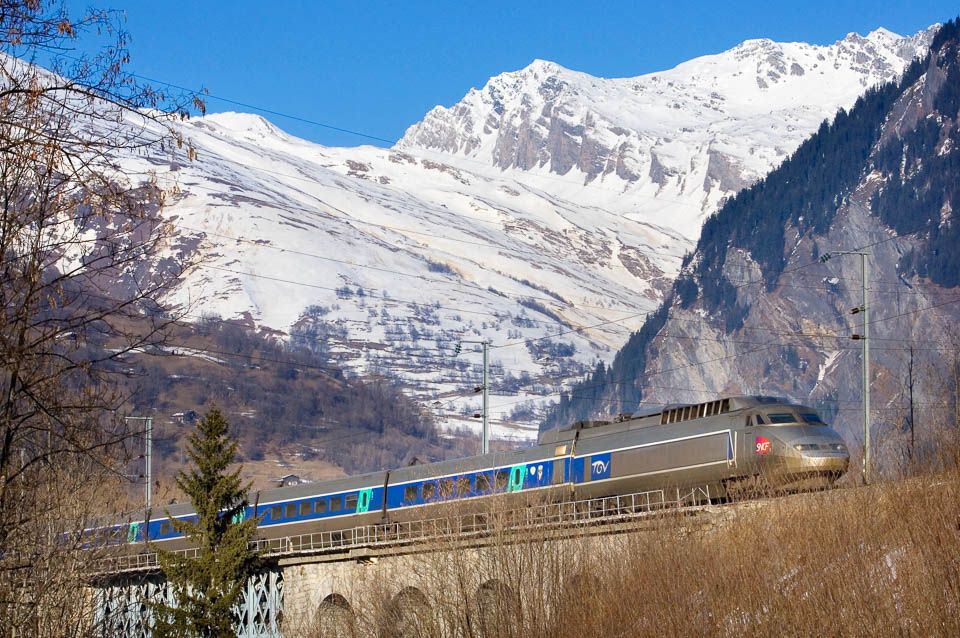
Taking the Eurostar to Paris, then a TGV train from Paris to the Alps is a great way to travel. While it’s not as direct as the Eurostar Ski Train, it does have some advantages:
1. You can reach far more resorts this way because you have more route options.
2. You can travel on any day of the week, with several departures each day.
3. TGVs are comfortable and have a decent café-bar on board.
Below, you’ll find our step-by-step guide on how to travel via Eurostar and TGV.
Step 1: Take a Eurostar to Paris
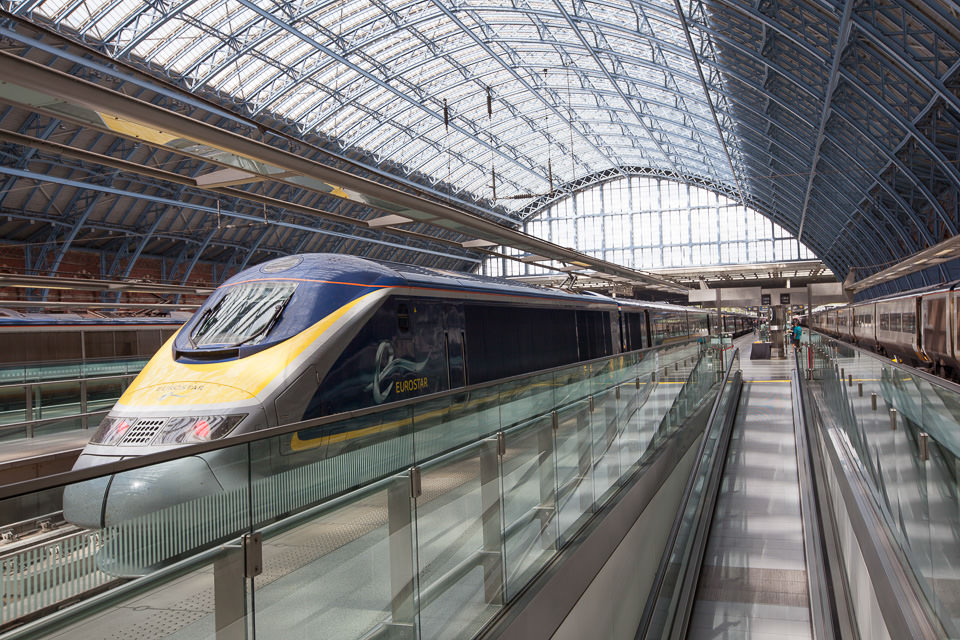 Photo: Eurostar International
Photo: Eurostar International
At London St. Pancras, you’ll board the Eurostar, sit down, have a chat with your friends, go to the cafe bar, read a book, look at the scenery gliding by— perhaps share a joke with a fellow passenger.
There are lots of great ways to use your time on board. Before you know it your Eurostar will arrive at Paris Nord.
You may also want to read our guide to what the Eurostar is like on board.
Step 2: Change from Paris Nord to Paris Gare de Lyon
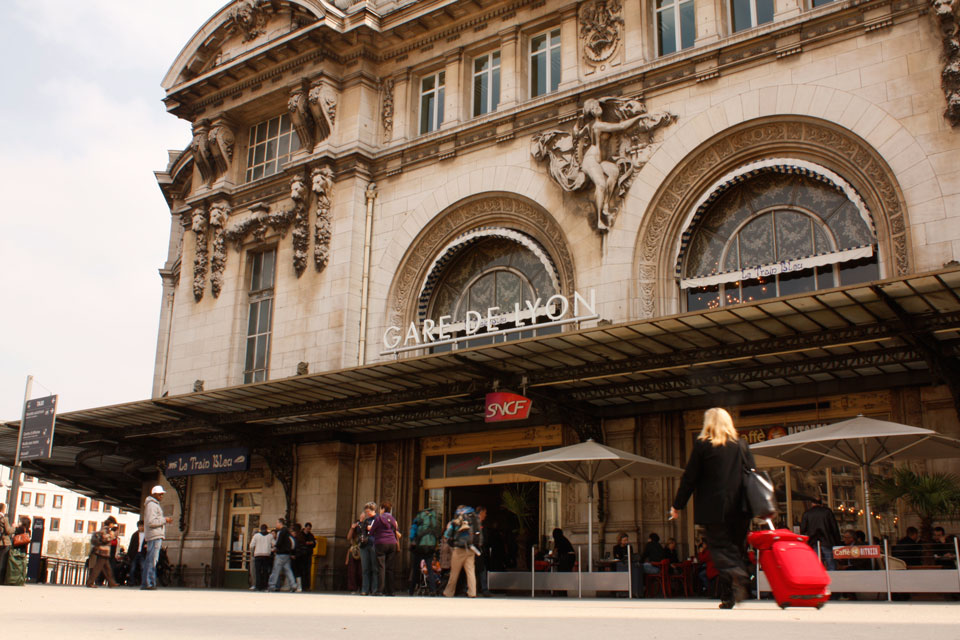 Photo: Daniel Elkan
Photo: Daniel Elkan
Next, you’ll want to get from Paris Nord, where the Eurostar arrives, to Paris Gare de Lyon: the station from where TGVs depart for the Alps.
The easiest way to do this is with a pre-booked taxi, where the driver will wait for you at the end of the Eurostar platform holding a placard with your name. There’s also a taxi rank 50 metres to the right of the Eurostar platform, where you can call a cab if you haven’t pre-booked.
Another easy option is the RER (part of the Paris Metro system). When you get to Gare de Lyon, you can have lunch if there is time, or bring some food onto the TGV (which also has a cafe bar).
You can read about these options in depth in our guide to changing station from Paris Nord to Paris Gare de Lyon
Step 3: Whizz to the Alps on the TGV
 Families on TGVPhoto: Daniel Elkan
Families on TGVPhoto: Daniel Elkan
After boarding your TGV train, Paris will slip away as you speed out of the suburbs and through the French countryside.
Fields, lakes, farms, houses—you'll see what people do with their back gardens, what little villages look like here.
Head to the café-bar, grab a meal, some snacks, a coffee or a bottle of wine. Have a snooze, do some work, play games, chat, dream about the slopes. When you arrive at your destination station, it’ll be a relatively short taxi or bus ride up to your ski resort.
You may also want to read our guide to what the TGV is like on board.
Step 4: Transfer to your resort
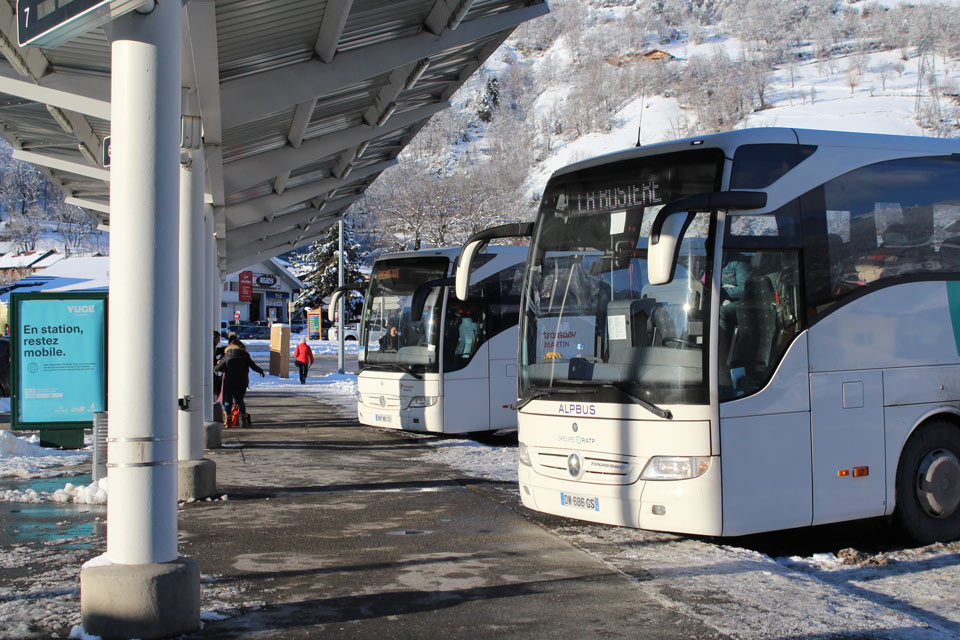 Photo: Daniel Elkan
Photo: Daniel Elkan
Your final step will be to get from the nearest train station to your chosen ski resort. These transfers are typically between 20 minutes and 45 minutes. This is far shorter than airport transfers, which can take up to 2 - 5 hours (and often longer, when roads are clogged with traffic).
It's a good idea to pre-book a taxi transfer, although at popular stations like Bourg-Saint-Maurice and Moûtiers you should find taxis waiting at the taxi rank too.
There are also buses from train stations to ski resorts, usually timed to coincide with the arrival of the TGV.
For every ski resort on the Snowcarbon website, we have a transfer guide page to show you taxi and bus options and how to book them.
TGV durations from Paris
TGVs travel at speeds of up to 300km/h. Below is a table showing some key train stations near ski resorts, accessible through a single TGV journey from Paris. The table shows how long the journey takes from Paris, and the average number of direct TGV departures to a given destination per day, based on Saturday schedules in winter.
| Destination station | Duration | Direct TGVs per day |
| Annecy | 3h 45m | 5 |
| Aime la Plagne | 4h 39m | 8 |
| Bellegarde | 2h 45m | 9 |
| Bourg-Saint-Maurice | 5h 00m | 8 |
| Cluses | 4h 42m | 2 |
| Geneva | 3h 15m | 7 |
| Grenoble | 3h 13m | 6 |
| Landry | 4h 50m | 8 |
| Modane | 4h 04m | 8 |
| Moûtiers | 4h 19m | 8 |
| Oulx | 4h 40m | 4 |
| Sallanches | 5h 01m | 2 |
| St Avre le Chambre | 3h 47m | 2 |
| Saint-Gervais | 5h 09m | 2 |
| St Jean de Maurienne | 3h 39m | 3 |
| St Michel Valloire | 4h 14m | 2 |
Eurostar + TGV vs flying to the Alps
Taking the Eurostar + TGV is as fast as Eurostar Snow, but is it as fast as flying?
Incredibly, yes, it often is a close-run thing, door to door. Check out this Top Gear-style plane vs train race where Snowcarbon co-founder Daniel Elkan races experienced ski writer Neil English to the Three Valleys.
In this film, you'll watch Daniel travel in Standard Class on Eurostar and TGV, while Neil flies by EasyJet.
Daniel certainly had a more comfortable journey, but who won the race?
How to book Eurostar + TGV journeys
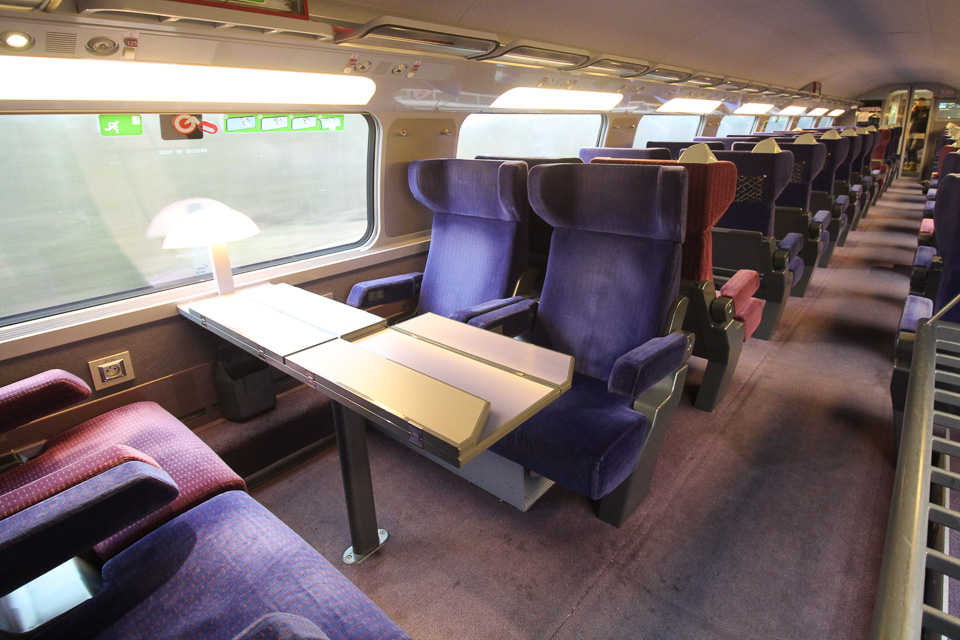 Photo: Daniel Elkan
Photo: Daniel Elkan
There are two ways to book Eurostar + TGV journeys.
You can book the journey independently, or in some cases you can book via a ski tour operator as part of a rail-ski package.
Prices start at £220 for a return from London to the Alps but are often higher. You might end up paying £260 to £370 off-peak and £420 to £590 on-peak dates. Predicting these fares isn't easy, but there are ways to guarantee cheaper tickets. You can read about these and how to book Eurostar + TGV
journeys in our guide to booking ski holidays by train.
Ski holidays by train — Ask Snowcarbon
At Snowcarbon we are always happy to help you with suggestions for great resorts, fantastic accommodations, and how to get where you're going.
We look forward to helping you.
